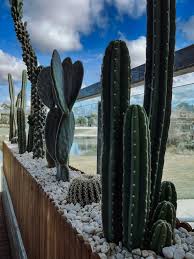Uncategorized
Where To Find Peyote?

Where To Find Peyote: San Pedro Cactus Plant
The cactus is renowned for its psychoactive properties due to the presence of mescaline, a compound that has been used for thousands of years by indigenous peoples for spiritual and medicinal purposes. Peyote typically flowers from March to May, producing small pink fruits that contain seeds requiring hot and humid conditions to germinate. (san pedro cactus trichocereus).
For those seeking to find san pedro cactus plant, it is essential to note that its natural populations have been over-harvested, leading to its classification as an endangered species in some areas. Cultivation is now seen as a crucial conservation strategy. While peyote can be found in the wild, it is also available through legal channels for ornamental purposes; however, harvesting for consumption remains heavily regulated.
san pedro cactus trichocereus
Trichocereus pachanoi, commonly known as san pedro cactus trichocereus, is a fast-growing, columnar cactus native to the Andes mountains of South America, particularly in countries like Peru, Ecuador, and Bolivia. This cactus can reach heights of 10 to 20 feet and typically features multiple stems that are light to dark green with prominent ribs and spines.
San Pedro has been used for over 3,000 years in traditional Andean medicine and shamanic rituals, where it plays a crucial role in healing and spiritual practices. The cactus contains mescaline, a psychoactive compound that induces visionary experiences. Historically, its use was documented by Spanish conquistadors who noted its significance in indigenous rituals despite attempts to suppress it. (san pedro cactus trichocereus).
The plant thrives at altitudes of 2,000 to 3,300 meters and is well-adapted to its high-altitude environment, requiring well-draining soil and full sunlight during its growing season. San Pedro is not only valued for its psychoactive properties but also appreciated as an ornamental plant in various parts of the world due to its striking appearance and cultural significance.
San Pedro Cactus Plant For Sale
san pedro cactus trichocereus pachanoi
This remarkable plant can reach heights of 10 to 20 feet (3 to 6 meters) and can spread 5 to 6 feet (1.5 to 1.8 meters) wide, thriving in USDA hardiness zones 8 to 10. Its stems are typically pale green to blue-green when young, maturing to a darker green with age, and feature 4-8 rounded ribs adorned with white areoles that may produce a few spines.
